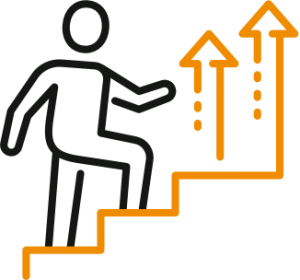
Is it a new Millennial you just hired in a lower level support function? Is it a Gen X employee who has been working hard and loyally through the Great Recession who is still with you? Is it a mother with two children who are now in school? Is it that intern you brought in to support your sales team? Who in this group demonstrates the best leadership skills?
We recently reviewed a survey where several hundred leaders responded. More than 40 percent of them reported feeling overlooked for an advancement.
Since you are not new to human performance, let me ask you this question? How long before leaders like these leave? Here’s another question that falls right in your wheelhouse. Can you afford to lose them?
We are starting to see a trend. Small business owners with 25 to 150 employees who have been in business for 30 years or more are now thinking about their next steps as they approach retirement. It centers on three questions:
- Do I simply close up shop?
- Do I sell out to a bigger company that discounts my company value because I AM the formidable work culture that built loyalty and a sense of healthy family that will disappear when I am gone?
- Do I sell to an employee or to my employees?
If you are contemplating any of these questions now because your exit strategy is 5 to 7 years down the road, what are some options that are available to you?
Options for Developing Your Employees’ Best Leadership Skills Now
Here are three options to consider that are affordable for small business.
 Consider the idea that overlooked people may respond by leaving AND moving to a competitor to build their best leadership skills.
Consider the idea that overlooked people may respond by leaving AND moving to a competitor to build their best leadership skills.
In the study we reviewed, one finding was that 68 percent of the leaders surveyed who reported that they felt overlooked said they considered leaving or did leave an organization. Unfortunately climbing the ladder to secure a leadership position is pretty much old school now.
Forward progress for many employees now looks more like climbing a rock wall. Sometimes you move laterally. Other times you find a good foot hold below you that helps you climb higher.
With the advancement of AI, many number crunching and projection creating jobs will be handled by machines. The human performance element, however, is needed more than ever.
Do your high potential employees excel at people skills, solving group problems, building and maintaining trust, or facilitating cooperative team performance? Are they genuine and respectful or are they bullies or avoiders rather than assertive, frank and forthright? Do they solve problems to the root cause and learn from mistakes? Can they build a felt sense of organizational success and recognition that is much more than just making money and grow your bottom line, too?
Perhaps addressing these questions in your next planning retreat will trigger both insights and a strategic way forward.
 Consider how training can surface best leadership skills.
Consider how training can surface best leadership skills.
Training without transference and retention through the deployment of skills that improve employee relationships and your bottom line is a waste of time. Yes, training can be a motivator for people who want to be recognized and rewarded.
However, if you are not taking their new skills and applying them immediately in the workplace, on your teams and through your initiatives, they will lose up to 90% of what they learned. The 10-15% they retain is information they were already familiar with. So, how does this serve you?
One solution is to offer training to all your employees after considering how you will use that training to improve your employee performance and bottom line. This takes planning and strategy that a good consultant schooled in team performance can help you with should you want an impartial outside view.
However, if you are thinking about an exit strategy, it is important to know that you do have the power to track and measure your team development improvements during you employees’ training if you are considering the right tools.
This is training that can be delivered through your employee’s workstation or smart devices. Micro-training that delivers 15 to 30 minute chunks of training that you can weave into your weekly team huddles is a valuable way to train everyone. And you can see who engages and does something with the training they receive. These are your next leaders. This is how they rise from their current roles to make more difference in your company.
For example, some employees might lead training practice groups that provide feedback and insight for employees who need to step down their aggressiveness or step up their passiveness to become more assertive, frank and forthright. Others might lead problem solving study groups that start tackling perennial problems in your company. All of this reinforces their training, helps them practice team leadership and grows your company, too.
If considering this option is a possibility, there is a good micro-training calculator on this website page that will help you determine your annual cost per employee.
 Consider measuring the quality of trust, interdependence, genuineness, empathy , risk resolution and success in your work culture behavior.
Consider measuring the quality of trust, interdependence, genuineness, empathy , risk resolution and success in your work culture behavior.
The positive work culture you have built doesn’t need to dissolve when you leave. A work culture that is anchored by behaviors that support trust, interdependence, genuineness, empathy, risk resolution and success (TIGERS®) is something to aim for. It is also measurable.
The TIGERS 6 Principles™ emerged from group dynamic research and were validated twice in independent studies. It was found that these six principles are required for high performance teams and organizations. If all six principles are strong, there are predictable outcomes. If one or more falls short, there are also predictable outcomes that can be improved by employee skill development.
Each principle can be independently measured in your team and work culture behavior profile. When you combine your assessment findings with targeted skill building in your least performing areas, you can track improvements in your bottom line through cost savings or productivity improvements. This is where micro-training supports work culture improvement while improving group behavior norms that do not wither away when you leave.
Whether you intend to sell your company or are building a new one and want to scale and attract the very best employees, these three considerations are something to take seriously. The more pre exit strategy research you do, the better decisions you will make when the time comes.
Copyright TIGERS Success Series, Inc.
About TIGERS Success Series Group Norm Facilitator Training



